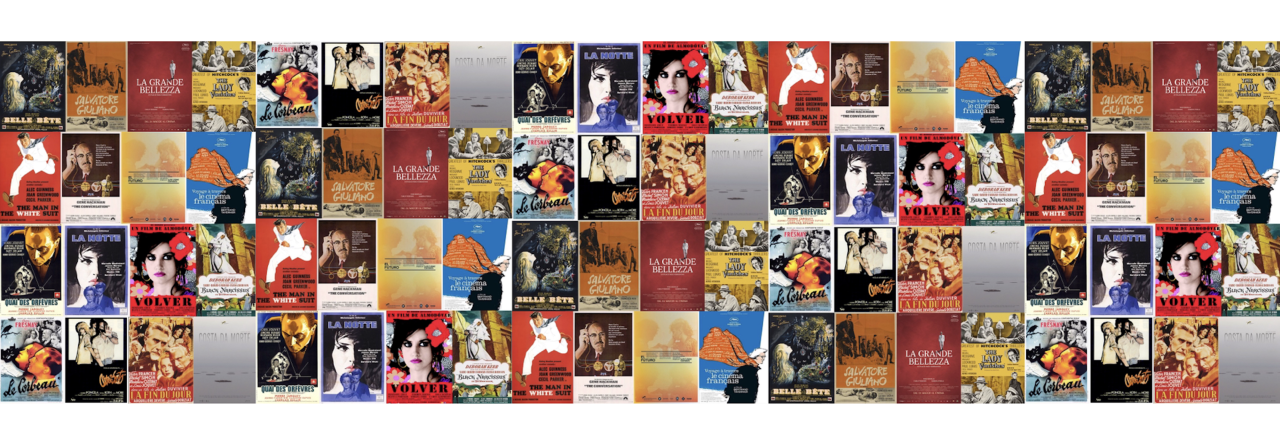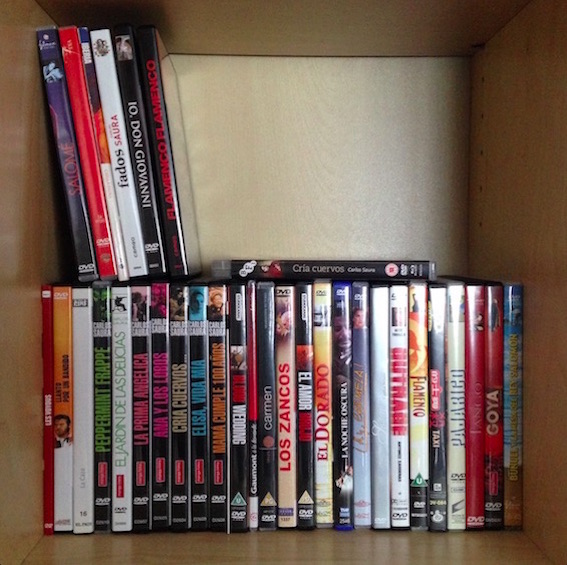
This was originally posted on the old blog in October 2014 (my practice now when I reprint something from the old blog is to remove the original content and in its place leave a link to the post here) and is an extended version of the review I wrote for Eye for Film (which can be found here). The figures quoted within the piece (such as unemployment stats) relate to that year. Back in 2014, immigration was already a toxic topic within political discourse in the UK (a certain far right sack of English shit – whose media time is out of all proportion to the size of his party – was mentioned by name during the Q&A in Edinburgh). Post-EU Referendum, I can only imagine that the participants in Bollaín’s timely film have now seen this foreign land in a more negative light – I certainly have.
An angry cry of indignation and a call for political mobilisation, with En tierra extraña – her seventh feature – Icíar Bollaín makes her first foray into documentary, examining the emigration phenomenon among a generation of Spaniards (mainly university graduates in their 20s and 30s) who have been forced to leave Spain due to the economic situation. The Spanish government’s official figures say that around 225,000 Spaniards have left Spain since the current economic crisis began, but independent sources put the figure closer to 700,000 – at least 20,000 of whom have ended up in Edinburgh. So it was appropriate that the film’s UK premiere was as the opening film of the inaugural Edinburgh Spanish Film Festival. Bollaín – herself a resident of the Scottish capital – explores the reasons behind this generational exodus, and the experiences of those who have found themselves in a foreign land for an extended period of time through necessity rather than active choice.
Bollaín’s original plan was to follow the stories of five people, but – she explained in the Q&A after the (sold out) Edinburgh screening I attended – people kept leaving, and she had to rethink her approach. One of the original five was Gloria, who we see organising an artistic expression of how it feels to be Spanish and far from home – she collects ‘lost’ gloves from around the city (the metaphor of the single gloves is that being an emigrant is like feeling you are missing half of yourself, which I personally find a bit twee but it functions well enough here as a connecting device). The gloves were used in a photography project (the images flash up at the end of the film) which was advertised around the city and online, with people choosing a glove from Gloria’s collection to be photographed with but also contributing their stories and experiences. The gloves find their final home on the railings outside the Spanish Embassy in Edinburgh in a show of solidarity with the Marchas de la Dignidad [Dignity March] which took place on 22nd March 2014 in Spain. The participants interviewed and filmed by Bollaín are those who turned up on the day of the photography project.
They are filmed solo or in pairs against the backdrop of Edinburgh Castle – perhaps a symbol of potentially impenetrable cultural barriers, but also conceivably a representation of a safe haven. In deeply moving, dignified, and articulate testimony, a series of highly qualified people – social workers, psychologists, teachers, and engineers among them – in their 20s and 30s (and some older women as well) explain how they came to be working in hotels, kitchens, and takeaways thousands of miles away from their homes and families. The story of a limited employment market, of short term contracts with little stability, a lack of opportunities and no clear future is a familiar one – similar situations are taking place across Europe. But arguably in Spain the problems have been exacerbated by pre-existing problems relating to their political system in combination with severe austerity measures, and they have hit the young hard – youth unemployment in Spain currently hovers at 54% (it is around 16% in the UK).
While the interviewees talk of the erosion of confidence that occurs when you are stuck doing work that you are not proud of – and that doesn’t stretch your capabilities – almost all of them also say that they have felt welcome in Scotland, and that their work is appreciated, valued, and offers the possibility of progression. Their experiences in Scotland have made many of them reevaluate how Spain treats immigrants, especially those from Latin America – and Bollaín offers illustrations of anti-immigration political campaigning in Spain (again, that’s something that Europe as a whole currently shares). Although we meet chemical engineers working as housekeepers (her revelation that she was so underpaid as an engineer in Spain that she actually earns the same cleaning hotel rooms in Edinburgh was met with a collective “Oof” from the predominantly Spanish audience at the screening), and biologists serving fried chicken, the film emphasises that there can be a life-enhancing side to being immersed in another culture. People who have been in Scotland for longer, have made it through the language barrier to develop their careers, such as the young man involved in events management at the Scottish Parliament.
But the flipside of this cultural immersion is the problematising of ‘belonging’ – on the one hand, many of the participants can’t imagine ever feeling that they belong in Scotland, but the longer they stay away from home, the more they feel ‘other’ when they return there as well. This is summed up by one woman as sometimes feeling that she has double of everything (two homes, two lives – a feeling of plentitude), but at other times that she only has half (because she is split between two places). Nearly all of them speak of the deep sense of loneliness experienced by the immigrant far from home and surrounded by a language that is not their own – another woman brilliantly describes it as only being able to offer an abridged version of yourself because your identity does not fully translate (underlined in her case by the Scottish being unable to properly pronounce her name – Mar – and adapting it into something recognisable to themselves but foreign to her self perception).
In amongst the nostalgia – Bollaín said that that was what most surprised her, that people in their 20s and 30s felt such a strong nostalgia for Spain, a longing for what they have left behind, or for those things being missed (e.g. births, deaths, and marriages, the markers in a shared life) during their absence – is a deeply-felt impotent rage at being subjected to something that is not of their making. The director’s contention is that despite what the politicians say – and Bollaín utilises news footage to give Spanish politicians enough rope to hang themselves with their disingenuous statements about enhanced employability – this mass emigration is not the same as that of Spain in the 1960s. In that era Spain was a poor country with a sub-standard education system – many of those who went abroad (predominantly to factories in Germany) were the rural poor. In contrast, those leaving today boast university educations, and head into unskilled work; the current phenomenon effectively deprives their homeland of a generation of skilled professionals and impoverishes the country in a way that goes beyond the economic.
Alongside news and archive footage (and an explanation of the socio-economic context from sociologist Joaquin Garcia Roca), Bollaín skilfully interweaves Alberto San Juan’s one-man show – Autorretrato de un joven capitalista español / Portrait of a Young Spanish Capitalist – into the film to create a recurring point of reference around which to organise the testimonies. Humorous, but also angry and educational, San Juan’s monologue questions how Spain came to be in its current economic position and proffers some explanations with recourse to history, politics, and an account of how the West (in the form of Henry Kissinger and German Chancellor Willy Brandt) interfered behind the scenes in Spain’s journey to democracy – and what Socialist Prime Minister Felipe González acquiesced to in the 1980s in order to get European membership for Spain. Cut from the same political cloth as Bollaín, San Juan pulls no punches and ends his performance by asking whether what the Spanish are experiencing now is just a continuation of Francoism under another name, wherein the vested interests of a powerful minority are protected at the expense of the common citizen. This acts as a carefully argued – although avowedly one-sided – counterbalance to the emotion of the testimonies, and as a call for mobilisation and participation in order to change Spanish politics.
At times profoundly moving (people trying not to cry is lump-in-my-throat material for me generally but the loneliness and trying-to-be-stoic-in-the-face-of-despair just made me want to hug them), En tierra extraña burns with indignation at the circumstances foisted on a generation who did what they were supposed to but who have had little choice but to abandon the careers and futures they thought lay ahead of them. While the film doesn’t offer solutions, it suggests that there is cause for hope – in one section of San Juan’s show he says that the streets of Spain fell silent on 23rd February 1981 (when Lieutenant Colonel Tejero attempted a coup d’etat in the Spanish Parliament) but that they woke up and unfroze on 15th May 2011 (the start of the protests and the Indignados movement). He argues that they won’t be silenced again, and during the Q&A Bollaín pointed to the abandonment of the Partido Popular’s medieval proposed abortion law and the appearance of new left-wing party Podemos as proof that people can make a difference when they group together. In calling Spain’s political class to account, Bollaín gives a voice to those left outside (a common theme across her filmography) – of both their country and political system – and at a time when poisonous polemics about immigration are sweeping Europe, her humane and impassioned documentary deserves to be seen far and wide.
The film is available on-demand at Vimeo.












